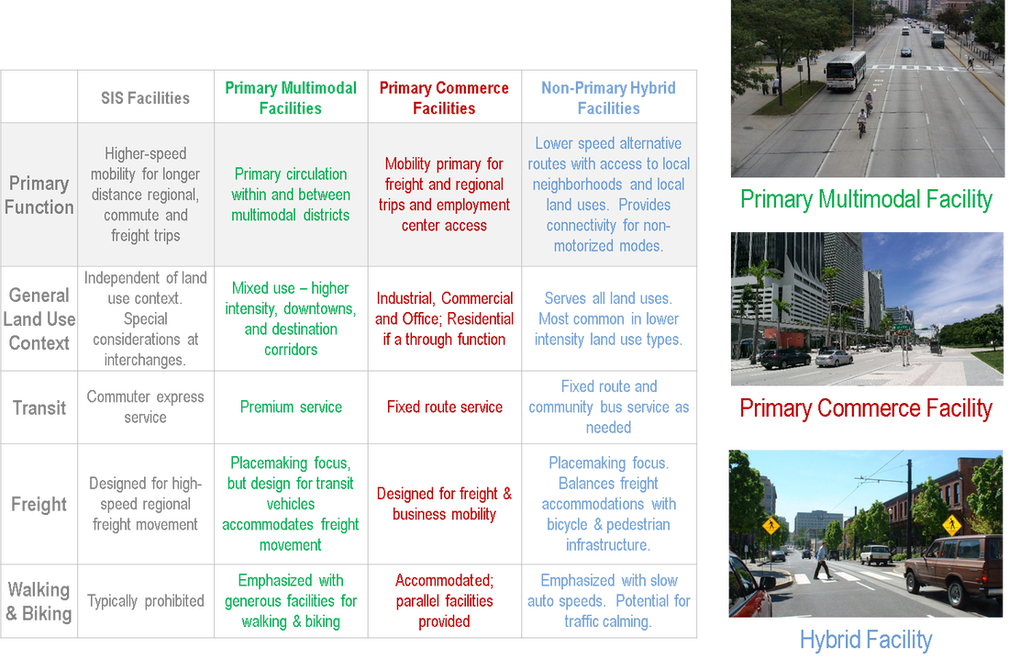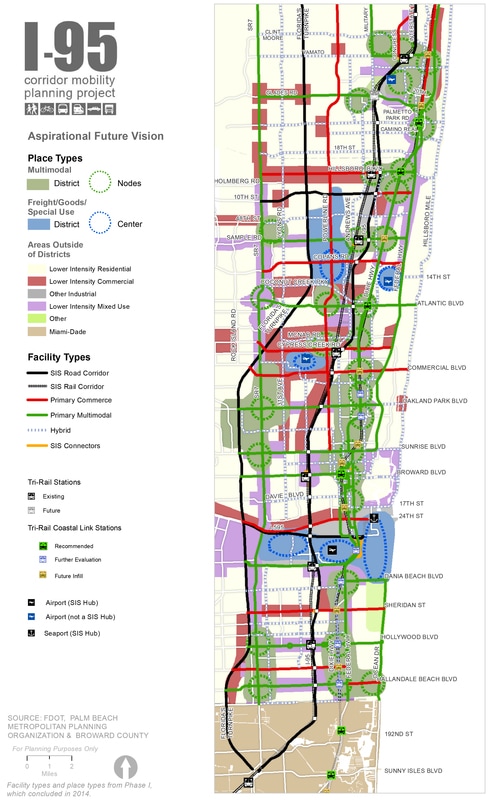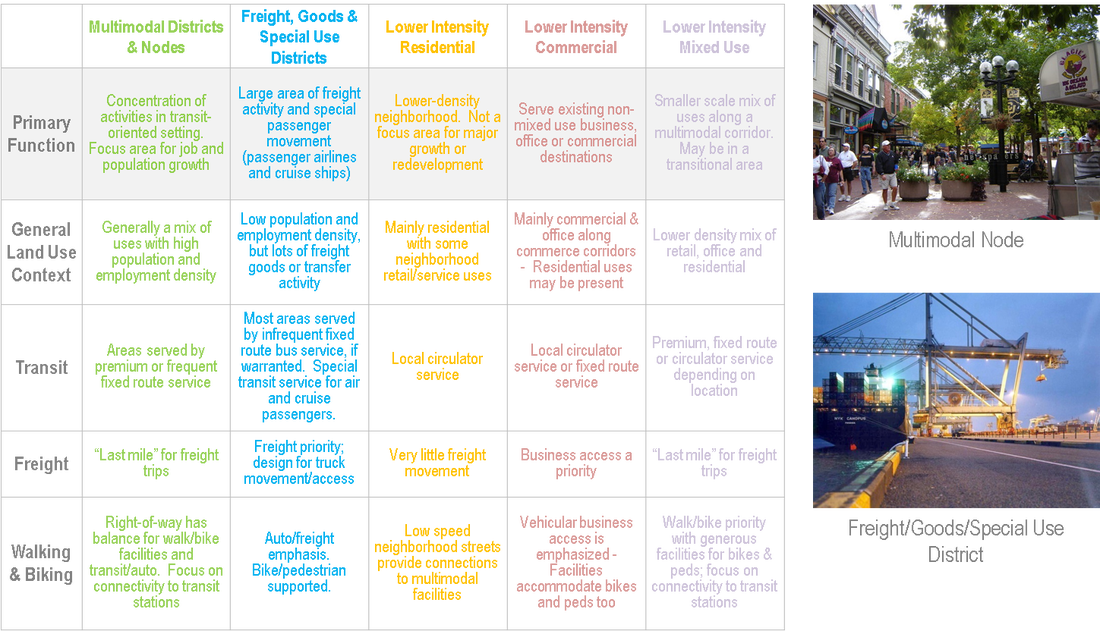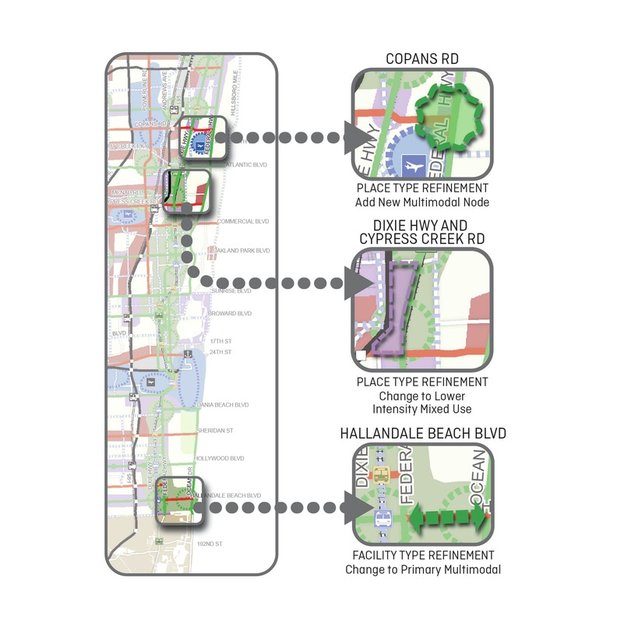Aspirational Future Vision
|
The first task of the I-95 Corridor Mobility Planning Project was to synthesize previous studies, adopted planning documents, and anticipated population and employment growth into an aspirational future vision of the transportation system and the existing and future land uses that rely on the transportation system.
The vision is expressed through a framework of facility types and place types, each with unique functions that comprise an integrated system of transportation and land use. The vision emphasizes networks of transportation facility types and place types. Multimodal Districts and Nodes on a network of Primary Multimodal facilities support walkable, livable communities. Freight/Goods/Special Use Districts and Centers are served by the Strategic Intermodal System (SIS) and a network of Primary Commerce facilities. Place types outside of the districts, nodes, and centers include lower intensity residential, lower intensity commercial, and lower intensity mixed use areas. |
Facility Types and Functions

Place Types and Functions
The Working Group affirmed the original vision map in 2013 as reflective of the various stakeholders’ visions and plans. In 2016, stakeholders reaffirmed the general framework of facility types, place types, and functions, and suggested refinements to the vision map to better align with current plans. The suggested refinements will be addressed at an upcoming Working Group meeting(s), along with consideration of expanding the set of facility types and place types to better distinguish between different types of multi-modal facilities and multi-modal places.


